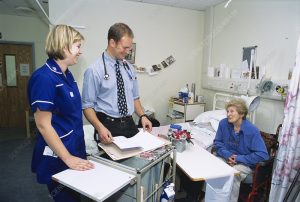Are there enough doctors and nurses in the NHS?
Yes. For both .. well, nearly enough. In fact we are mid-table for both doctors and nurses when compared to similar developed countries.

So. Are there enough doctors and nurses in the NHS?
How do we know? The best data that answers this question is from the OECD.
What is the OECD?
The Organisation for Economic Co-operation and Development (OECD) is an intergovernmental organisation with 38 member countries, founded in 1961. It is a forum whereby developed countries can compare their policies, priorities and investment – to identify good practices, and thus improve the domestic and international performance of its members. Healthcare is one of the areas that the OECD analyses. Here is their latest data on doctors and nurses.
Doctors
In 2021, there were 3.2 doctors per 1000 population vs an OECD average (in 2019) of 3.6/1000 – as shown here.
In 2021, there were 8.7 nurses per 1000 population vs an OECD average (in 2019) of 8.8/1000 – as shown here.
Comparisons to other countries
Doctors
We have more doctors (per 1000 pop) than Canada, US and Japan; but less doctors than the Netherlands, Denmark and France.
We have more nurses (per 1000 pop) than Italy, Spain and Greece; but less nurses than Germany, Sweden and Finland.
Problems with comparisons
International comparisons like this require some thought, as the numbers of doctors and nurses counted depend on how you define both. For example, different countries might include/exclude non-practising academic or retired doctors. Also different countries may define ‘a nurse’ differently – they may include/exclude support workers. Nonetheless the OECD data is the most reliable we have to compare countries.
Summary
Are there enough doctors and nurses in the NHS? Yes. We hope this has been helpful.
Other resource
There is alot more information in the OECDs latest healthcare report.

